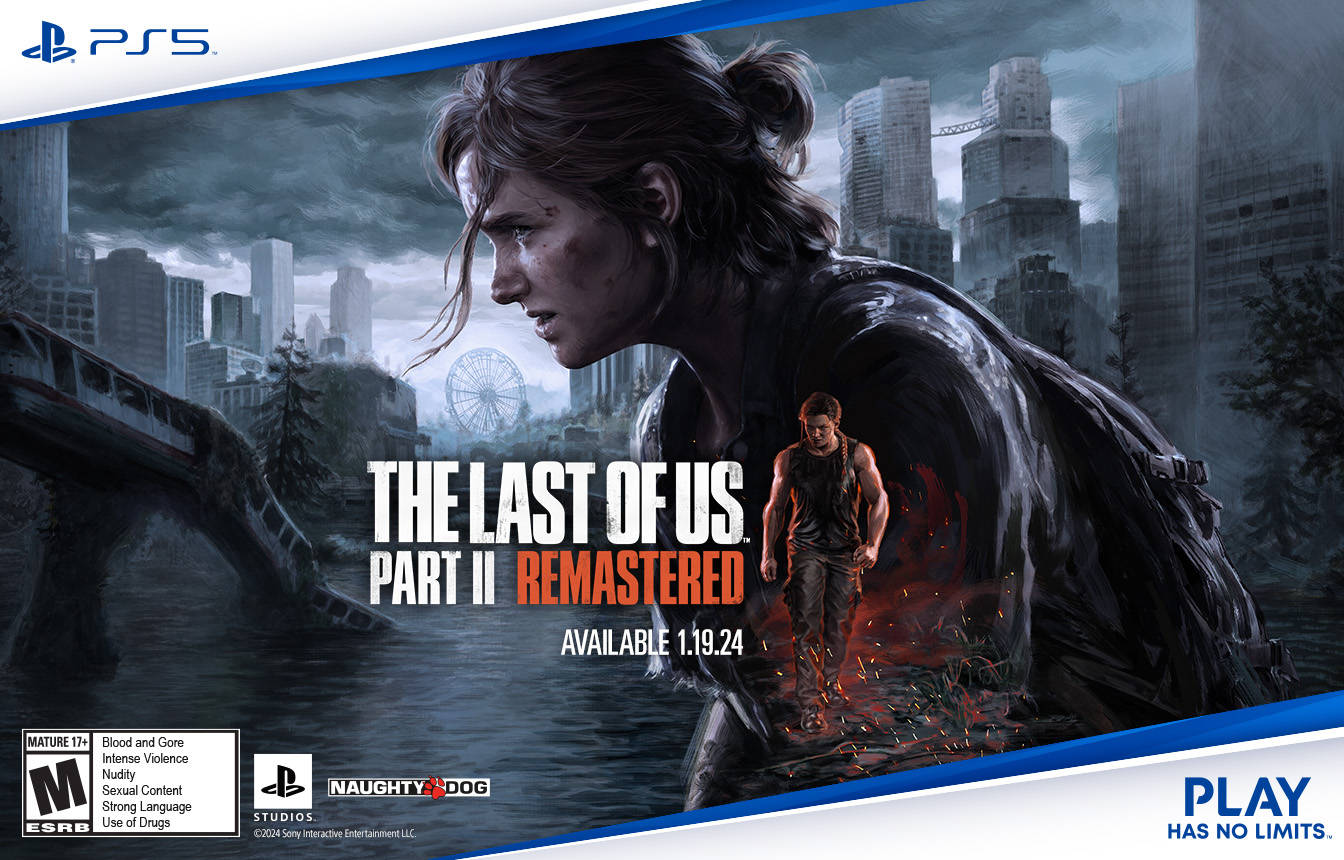For a genre that’s been around for only about half of the time the gaming industry itself has at this point, horror games have done a lot during their relatively short lifetime. From jump-scare zombie survival to nightmarish psychological torture to studies in the darkest depravities of mankind, horror-themed video games have touched on a wide variety of topics and put players in a whole host of do-or-die situations.
It’s impressive, then, that Supermassive Games’ Until Dawn can give me an experience unlike anything else I’ve played up until this point. As much ground as the genre has indeed covered, gaming has shown little effort in tapping into an idea that’s been a cornerstone of the movie industry for at least as long as I’ve been alive: the B-grade teen slasher flick.
The premise that’s set up as the game kicks off is perfect: after twin sisters disappear (and are presumed dead) due to a trick their friends played on them during a winter retreat, the eight remaining co-eds return to the girl’s family getaway home one year later, where their surviving brother is holding a party to honor his sisters’ memory and reunite the group of friends. Unfortunately, the girls found their fate at the hands of something sinister that lives in those dark, snowy, northern Canada mountains, and whatever it is, it now has eight more victims to set its sights upon.
Until Dawn was originally conceived as a first-person PS3 release entirely based around Sony’s somewhat-forgotten Move controller, but after its own disappearing act, the game re-emerged as a third-person PS4 project with only a minimal amount of optional movement-based controls remaining. Though I’ve never played any portion of the game in its original intended form, I have to imagine that we ended up getting the far better possible outcome.
That’s because, as it stands now, Until Dawn is indeed a love letter of sorts to horror movies, and that idea plays out better when the entire experience can have more of a cinematic feel to it. Though at times the game’s last-gen origins seem to shine through in scenes or visuals that look noticeably worse graphically, this is usually an extremely beautiful game. The snow-covered surroundings and mountaintop locations are as stunning as they are scary, and the legitimately impressive character models help you buy into the idea of them being real 20-something guys and gals stuck in an ever-worsening situation—as does the game’s impressive motion capture and the fantastic job done by the Hollywood talent lending their voices to the cast. (Has Peter Stormare ever found a role he couldn’t make awesome?)
As the group comes together at the mountain lodge and then—conveniently—continually gets split apart, the game’s focus constantly changes, giving us a chance to see snippets of what each of the eight characters has to go through as they try to survive the night. Who you’re playing at any given time isn’t about any sort of special abilities or skills that each has, so outside of a few brief segments where you’re given a weapon, gameplay stays relatively similar no matter who you’re controlling.
For the most part, Until Dawn is about exploration, and even in the mundane of those moments, the overall atmosphere can make progression tense and nerve-wracking. There are few puzzles to speak of throughout the game’s eight to nine hours of playtime, so you’ll need to be invested in the story, uncovering the mystery of what happened to the twins, and the fate of the cast as they try to survive until dawn. Even without many of what would be considered traditional gameplay inclusions, Until Dawn’s narrative carried me most of the way through. Admittedly, things do drag a bit around the halfway mark, primarily when one particular character overstays their welcome as they travel through a location that also ends up feeling like somewhat of a drag.
When something does finally jump out of the shadows, the main result is a harrowing escape or attempt to fight back via that love-them-or-hate-them concept known as the Quick Time Event. At times, that means your traditional “hit the proper button before time runs out” requirements; at others, you’ll be forced to make a split-second decision between two choices for what your character should do next.
The good part of all of this is that, for Until Dawn, that gameplay direction works surprisingly well. Horror movies of this style aren’t about constant battles or knock-down, drag-out fights. They’re about quick moments of chaos and terror, and usually the best course of action is running away. You’ll also be given a choice in the quieter moments of the story, and how you decide to act (or react) to another character can be very important for how things turn out later. On the whole, I never felt like I was missing the “game” portion of Until Dawn, as everything else was compelling and interesting enough to keep me invested in the overall concept. Plus, as much as we may decry them in other situations, QTEs work perfectly here. Players are kept on their toes and always need to be ready to react at a moment’s notice, and the cinematic feeling of the game’s more dramatic moments is kept intact.
On the other hand, though, there could—and should—have been more here than what we got. The frenzied fleeing of Hayden Panettiere’s character Sam that’s been shown off as a demo for Until Dawn is a great scene—but it’s also far and away one of the best and most developed use of the game’s decision-making engine that you’ll run into. If only there were more moments like those.
Far and away, that concept of player choice is one of the biggest draws for Until Dawn, and even if it never reaches the full potential that could have been injected into a project like this, it’s still a fantastic option that really gives the storyline—and how you choose to travel along it—a real sense of weight and consequence. Obviously, any particular member of the cast can’t actually die at any time, but you can absolutely make choices and start sequences of events that’ll leave your group far smaller at the end than it was at the beginning. It’s hard to appreciate the repercussions a simple decision can have, even when going back and replaying the chapters to change your choices.
They’re definitely there, though, and they help set up a big question that’s often brought up in games that build themselves around letting players decide how to handle a particular situation. Will you go back and re-play a game until you’ve seen every potential outcome there is? Or will you have your one “true” playthrough, and use the game’s branching paths to create a more personalized experience? I’m definitely in the latter category of players—and I think taking that route makes the best of what Supermassive’s efforts have to offer. (Though, for the benefit of this review, I did go back and explore some of the results of alternate choices.)
The one other major ding that I’d give Until Dawn’s gameplay are the handful of elements that were obvious carry-overs from its days as a Move-focused game. Throughout the ten chapters, you’ll run into moments where interaction is way more complicated than it needs to be. For example, if you spot a mysterious photo lying on a table, you need to walk up to it, press X to interact, then hold R2 to pick up the photo, then use the right analog stick to turn it over to read whatever might be written on the back. Doorknobs, gate locks, switches—a variety of things all require these kinds of actions. Back when everything was using Move, the team no doubt thought it a neat novelty to give players “real-world interaction” with items in the game; now, they seem like an unnecessarily extra amount of steps. Also, having a game that features any level of making your character look around, and including no option to invert the vertical controls, is something I can’t forgive in the year 2015. Thankfully, there’s very little of that kind of camera manipulation throughout most of the game—but, again, I blame this as a holdover from when such movement control was all done by manipulating the Move controller like a flashlight.
Looking back at the history of horror games that I’ve loved over the years, most have existed in a world of what one might call “flawed brilliance.” Until Dawn, for me, very much finds itself in that kind of category. While it has some awkward controls, rough patches here and there, and doesn’t make full use of the ideas it’s brought to the table, it does all of those things while legitimately trying to inject something fresh and different into the genre in which it belongs. I think there’s going to be a lot of people for whom Until Dawn doesn’t click—especially those who require more “game” from their games. For those fans of horror who can still focus on the light in any unfortunate moments of darkness, then this is one gorey getaway trip I’d recommend you take.
|
★★★★☆
Until Dawn doesn't always live up to the potential Supermassive Games envisioned for its ambitious PS4 project, but the game succeeds in enough ways to make it a fascinating and engrossing twist on the horror genre. |
Developer Supermassive Games Publisher Sony Interactive Entertainment ESRB M - Mature Release Date 08.25.2015 |
| Until Dawn is available on PlayStation 4. Primary version played was for PlayStation 4. Product was provided by Sony Interactive Entertainment for the benefit of this coverage. EGM reviews on a scale of one to five stars. | |

Mollie got her start in games media via the crazy world of gaming fanzines, and now works at EGM with the goal of covering all of the weird Japanese and niche releases that nobody else on staff cares about. She’s active in the gaming community on a personal level, and an outspoken voice on topics such as equality in gaming, consumer rights, and good UI. Check her out on Twitter and Mastodon.





